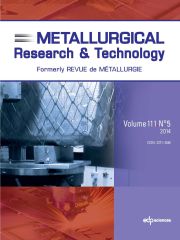Article contents
Lubricating the recycling machine
Published online by Cambridge University Press: 06 November 2012
Abstract
When introducing a new control paradigm in industry or society one has to accept that it is an evolutionary process where people, methods and processes must develop simultaneously, and this takes time. The recycling of material has been studied intensely for the last ten years using different approaches to material flow analyses, MFAs. They have given a good view of the magnitude of material flows but their use has been limited by lack of relevant data. In the case of recycling, data must be acquired from the practitioners of the trade and in order to get it, the value of the output for them and for society must be proved and visualized. This paper is based on a MFA model developed at KTH for steel flows in Sweden (part of the Swedish environmental research program, the “Steel-Eco-Cycle”). The aim of the work reported on here was to initiate the process of motivating better sampling of data in industry and society for performing MFAs. The KTH model is based on a product-to-product approach for steel, describing the recycling machine. Data is presented in a simplified model for Sweden with total figures and figures per capita. Areas where improvements can be made are identified and ways to “lubricate” the recycling machine are discussed. The main idea is to provide a way of describing flows that can be of use to recyclers and steel producers and form a basis for discussions on improvements. Finally, the underlying model is briefly described and the uncertainties of data are discussed.
- Type
- Research Article
- Information
- Metallurgical Research & Technology , Volume 109 , Issue 5: Social Value of Materials , 2012 , pp. 349 - 358
- Copyright
- © EDP Sciences 2012
References
- 4
- Cited by


